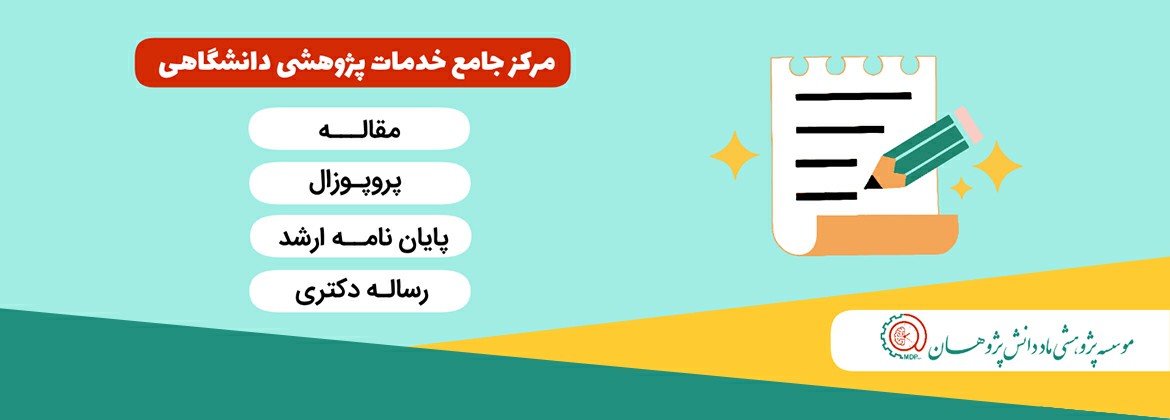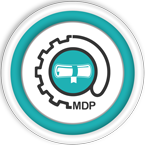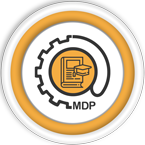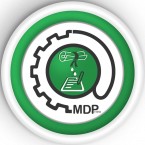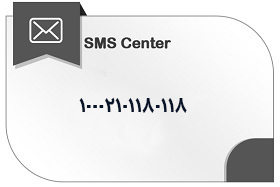- موضوعات پیشنهاد شده برای پایان نامه رشته مدیریت اجرایی:
- استفاده از روش تحلیل سلسله مراتبی فازی جهت برون سپاری خدمات و وارانتی
- بررسی رابطه گرایش کارآفرینانه کارکنان و موفقیت سازمانی
- مطالعه و بررسی رابطه عوامل سازمانی با پیاده سازی ERP در سازمان
- مطالعه و بررسی رابطه بین استراتژی سرمایه انسانی و عملکرد سازمان
- بررسی مدیریت ریسک در زنجیره تامین و رتبه بندی تأمین کنندگان (صنعت …)
- بررسی رابطه فرهنگ سازمانی و MIS
- طراحی مدلی جهت پیاده سازی موفق ERP در سازمان
- شناسایی و رتبه بندی عناصر تفکر استراتژیک در دانشگاه جهت جذب دانشجویان خارجی
- بررسی رابطه بین سبک های تفکر با رضایت شغلی مدیران مدارس متوسطه شهر …
- بررسی رابطه توانمندسازی و مهارت های ارتباطی با عملکرد شغلی کارکنان شرکت …
- رابطه جو سازمانی و کیفیت زندگی کاری با بهره وری کارکنان آموزش و پرورش شهر …
- رابطه بین اعتماد درون سازمانی و تعهد شغلی مدیران دبیرستان های شهر …
- بررسی رابطه فرهنگ سازمانی با کارآفرینی سازمانی و خلاقیت مدیران دبیرستان های شهرستان …
- بررسی تاثیر جو سازمانی بر عملکرد و رضایت شغلی
- مطالعه الگوی غالب رهبری در شرکت های موفق ایرانی
- تبیین ارتباط میان ساختار سازمانی و خلاقیت کارکنان
- تبیین ارتباط میان ساختار سازمانی و کارآفرینی سازمانی
- تدوین استراتژی بهینه با استفاده از ماتریس SWOT (مطالعه موردی …)
- بهینه سازی استراتژی های توانمندسازی منابع انسانی
- بررسی رابطه بازاریابی رابطه مند و وفاداری مشتریان
- مدلسازی رابطه اخلاق سازمانی و عملکرد سازمان
- ارزیابی کیفیت خدمات با استفاده از منطق فازی (موردی سازمان …)
- طراحی مدل ترکیبی مدل های تصمیم گیری چندمعیاره و فازی جهت سنجش کیفیت خدمات
- شناسایی و رتبه بندی عوامل موثر بر قصد مشتریان از خرید کالای تولید داخل
- مدلسازی رابطه سرمایه فکری و کارایی شرکت ها
- شناسایی و رتبه بندی عوامل موثر بر افزایش فساد مالی کارکنان
- مدلسازی رابطه رفتار شهروندی سازمان، اخلاق سازمانی و رهبری
- مدلسازی رابطه رفتار شهروندی سازمان، فرهنگ سازمانی و یادگیری سازمانی
- بررسی رابطه بازاریابی رابطه مند و رضایت مشتریان
- بررسی میزان تاثیرپذیری رابطه بین برنامه ریزی استراتژیک و عملکرد سازمان از انعطاف پذیری (عملیاتی، مالی، ساختاری و تکنولوژیکی) مورد صنعت …
- مدلسازی عوامل موثر بر اجرای برنامه های استراتژیک سازمان …
- تبیین ارتباط میان سازمان یادگیرنده و خلاقیت کارکنان
- تبیین ارتباط میان سبک رهبری مدیران و فرهنگ سازمانی
- تبیین ارتباط میان هوش سازمانی و خلاقیت کارکنان
- تبیین ارتباط میان هوش سازمانی و کارآفرینی سازمانی
- تبیین ارتباط میان هوش هیجانی و خلاقیت کارکنان
- ارزیابی عملکرد و استراتژی سازمان بر اساس مدل تعالی سازمانی EFQM
- بررسی رابطه بین فرایند مدیریت دانش و نوآوری سازمان با عملکرد سازمان
- تدوین استراتژی کارآفرینی (موردی …)
- ارزیابی کارایی و رتبه بندی واحدها بر اساس بهره وری با استفاده از مدل تحلیل فراگیر داده ها (DEA)
- شناسایی و اولویت بندی عناصر تفکر استراتژیک در سازمان … (با استفاده از معادلات ساختاری یا آنتروپی یا …)
- طراحی مدلی جهت انتخاب تفکر استراتژیک بهینه برای مدیران
- تفکر سیستمی و بهره وری کارکنان
- بررسی موانع پیاده سازی اقیانوس آبی در سازمان …
- بررسی رابطه بین سبک های مدیریت تحول و اثربخشی سازمان ….
- تاثیر رهبری تحول آفرین و ساختار سازمان
- تاثیر رهبری تحول آفرین و خلاقیت سازمانی
- رابطه شهروندی سازمانی با سودآوری سازمان …
- رابطه عدالت سازمانی با سودآوری سازمان …
- ارزیابی عملکرد منابع انسانی با رویکرد کارت امتیازی متوارن BSC و TOPSIS
- مدیریت استراتژیک پروژه های کلان فناوری اطلاعات و ارتباطات درشرکت ….
- سنجش کیفیت خدمات و اندازه گیری رضایت مشتریان با استفاده از روش های سروکووال و ای کووال
- مدیریت استراتژیک ریسک در پروژه ها
- به کارگیری تئوری فازی در کارت امتیازی متوازن (BSC) به منظور ارزیابی استراتژی های جاری سازمان
- طراحی مدل بهینه سیستم کنترل موجودی مواد اولیه با رویکرد حداقل سازی ریسک و هزینه (موردی محصول …)
- رابطه بین ارزش ویژه برند و نیات رفتاری مشتریان
- رابطه بین ارزش ویژه برند و عملکرد سازمان ها
- شناسایی و اولویت بندی عوامل موثر بر ارزش برند بانک ها با استفاده از روش تحلیل سلسله مراتبی AHP
- ارائه مدلی جهت پیش بینی تقاضا در زنجیره تامین با شبکه عصبی
- شناسایی و اولویت بندی عوامل موثر بر اجرای برنامه های استراتژیک سازمان
- شناسایی و اولویت بندی عوامل موثر بر پیاده سازی بهینه مدیریت ارتباط با مشتری (CRM)
- ارائه مدلی جهت رقابت پذیری در زنجیره تامین با الگوریتم تئوری بازی
- ارزیابی استراتژی جاری بانک پارسیان با رویکرد تلفیقی BSC/AHP
- تدوین استراتژی منابع انسانی با استفاده از مدل تلفیقی SWOT و AHP
- شناسایی و رتبه بندی استراتژی های مدیریت دانش سازمان …
- طراحی نظام جامع عملکرد … با کارت امتیازی متوازن BSC
- ارزیابی عملکرد بر اساس کارایی و محاسبه بهره وری با استفاده از مدل تحلیل پوششی داده ها DEA در سازمان…
- مدیریت استراتژیک فناوری اطلاعات و ارتباطات درشرکت ….
- سنجش رابطه بین عوامل مربوط به ساختار سازمان و مدیریت استراتژیک (موردی …)
- بررسی رابطه استراتژی های بازاریابی و عملکرد سازمان
- طراحی مدل کنترل موجودی اقلام فاسد شدنی
- طراحی مدل بهینه انتخاب تامین کننده و تخصیص سفارشات (صنعت …)
- تدوین الگوی موفقیت پروژه ها با تلفیق مدل های EFQM,BSC,AHP
- بررسی رابطه بین استراتژی منابع انسانی و عملکرد سازمان
- بررسی رابطه بین استراتژی سرمایه انسانی و عملکرد سازمان
- بررسی رابطه بین استراتژی رفتار سازمانی و عملکرد سازمان
- شناسایی و اولویت بندی عوامل موثر بر موفقیت برنامه ریزی استراتژیک
- بهینه سازی استراتژی های توانمندسازی منابع انسانی
- تدوین استراتژی کارآفرینی سازمانی (موردی …)
- مدیریت استراتژیک فناوری اطلاعات و ارتباطات درشرکت ...
- به کارگیری تئوری فازی در کارت امتیازی متوازن (BSC) به منظور ارزیابی استراتژی های جاری سازمان
- سنجش عملکرد و اولویت بندی استراتژیی های سازمانی مرتبط با اهداف عملکردی با استفاده از مدل تلفیقی BSC و AHP (مطالعه موردی بانک سامان)
- ارزیابی استراتژی های جاری سازمان با استفاده از مدل تحلیل پوششی داده ها DEA
- شناسایی و اولویت بندی عوامل تعیین کننده
- سنجش رابطه و تاثیر عوامل موثر بر اجرای برنامه های استراتژیک (موردی)
- سنجش رابطه بین عوامل مربوط به ساختار سازمان و مدیریت استراتژیک (موردی)
- سنجش رابطه بین عوامل مربوط به فرهنگ سازمان و مدیریت بهینه استراتژیک (موردی)
- سنجش رابطه بین عوامل مربوط به رهبری سازمان و مدیریت بهینه استراتژیک (موردی)
- ارزیابی استراتژی جاری سازمان با BSC,FAHP
- شناسایی و اولویت بندی عوامل تعیین کننده در پیاده سازی مهندسی مجدد فرآیندها در برنامه ریزی استراتژیک سازمان
- بررسی رابطه مدیریت دانش و برنامه ریزی استراتژیک سازمان
- شناسایی عوامل تعیین کننده مدیریت ریسک و سنجش رابطه آن با مدیریت استراتژیک سازمان
- تدوین استراتژی بهینه زنجیره تامین با مدل تلفیقی SWOT و تحلیل سلسله مراتبی AHP
- شناسایی عوامل تاثیر گذار بر کارآفرینی سازمانی و نقش آن در پیاده سازی استراتژی کارآفرینی
- بررسی رابطه عوامل سازمانی (ساختار و تکنولوژی) با استراتژی مدیریت دانش
- بررسی رابطه عوامل فرهنگی با استراتژی مدیریت دانش
- همسوسازی استراتژی های سازمان جهت ارتقاء عملکرد
- همسوسازی و کمی سازی رابطه استراتژی منابع انسانی با استراتژی تجاری
- همسو سازی و کمی سازی رابطه استراتژی منابع انسانی با فرهنگ سازمانی
- همسو سازی و کمی سازی رابطه استراتژی منابع انسانی با استراتژی های کسب و کار
- همسو سازی و کمی سازی رابطه استراتژی منابع انسانی با استراتژی های بازاریابی
- همسو سازی و کمی سازی رابطه استراتژی منابع انسانی با استراتژی های فناوری اطلاعات و ارتباطات
- همسو سازی و کمی سازی استراتژی تولید با استراتژی های کسب و کار
- همسو سازی و کمی سازی استراتژی تولید با استراتژی های تجاری
- همسو سازی و کمی سازی استراتژی تولید با فرهنگ سازمانی
- همسو سازی و کمی سازی استراتژی تولید با استراتژی های بازاریابی
- همسو سازی و کمی سازی استراتژی تولید با استراتژی های فناوری اطلاعات و ارتباطات
- شناسایی و رتبه بندی عوامل موثر بر تدوین استراتژی تکنولوژیک سازمان
- بررسی رابطه استراتژی های بازاریابی و عملکرد سازمان
- تاثیر استراتژی مدیریت ارتباط با مشتری در مدیریت استراتژیک بازار
- شناسایی و رتبه بندی موانع پیش روی اجرای موثر استراتژی ها
- تدوین استراتژی بهینه بازاریابی در بازارهای الکترونیکی
- شناسایی و رتبه بندی استراتژی های بازاریابی در بانکداری الکترونیک
- اندازه گیری و کمی سازی ارزش ویژه برند در سازمان مورد مطالعه
- شناسایی و رتبه بندی استراتژی های مدیریت دانش سازمان با روش AHP
- بررسی عوامل موثر بر اجرای برنامه های استراتژیک شرکت
- بررسی تاثیر انعطاف پذیری در رابطه برنامه ریزی استراتژیک و عملکرد بر اساس مدل معادلات ساختاری
- تدوین مدل شاخص رضایت مشتری با استفاده از روش جدید PLS در صنعت … در ایران
- بررسی عوامل اثرگذار بر استفاده از پرداخت سیار (Mobyle Payment)
- سنجش عملکرد و همسوسازی استراتژیی های سازمانی با اهداف عملکردی به کمک مدل BSC (مطالعه موردی …)
- تدوین استراتژی بهینه فناوری اطلاعات IT با استفاده از ماتریس SWOT در …
- طراحی مدلی جهت اندازه گیری و تحلیل رضایتمندی مشتریان در بانکداری آنلاین
- The Effect of Information and communication technology expenditure on Employment in Industrial Countries
- The Effect of Information and communication technology expenditure on Economic Growth
- Cost of business start-up procedures and Employment
- Time required to start a business and economic growth
- business regulatory environment and economic growth
- business regulatory environment and employment
- business regulatory environment and inflation
- business regulatory environment and good governance
- good governance and unemployment
- Financial Development and Cost of business start-up procedures
- The Relationship of Establishing an Office Automation System and the Decision Making Quality of Towns of Tehran’s Education Organization Managers
- The Relationship between Managers’ leadership style and Employee Creativity using Sashkin Model
- The Relationships among Servant Leadership, Organizational Citizenship Behavior, Person-Organization Fit, and Organizational Identification in Fars Quality Cooperation.
- The Relationship between Organizational Structure and Employee Creativity
- The Relationships among Servant Leadership, Organizational Citizenship Behavior, Person-Organization Fit, and Organizational Identification in Fars Quality Cooperation.
- A Study of the Relation between Emotional Intelligence and Decision Making Style (Case Study:)
- The Relationship between Organizational Culture and Knowledge Management
- مقالات بیس ۲۰۱۳ :
- The intersection of justice and leadership: Testing a moderation model of contingent reward and interpersonal fairness
- Coordination practices in extreme situation
- Challenging the orthodoxy of value co-creation theory: A contingent view of co-production in design-intensive business services
- Like a phoenix from the ashes. A Weberian analysis of the charismatic CEO routinization
- Performance effects of cognitive heterogeneity in dual leadership structures in the arts: The role of selection system orientation
- The package logic: A study on value creation and knowledge flows
- Orchestrating R&D networks: Absorptive capacity, network stability, and innovation appropriability
- The organizational virtuousness of strategic corporate social responsibility: A case study of the Sri Lankan family-owned enterprise MAS Holdings
- Interaction effects of media and message on perceived complexity, risk and trust of innovative products
- Transferring HR concepts and practices within multi-national corporations in Romania: The management experience
- The tertius roles in a coopetitive context: The case of the European aeronautical and aerospace engineering sector
- The urban growth potential of second-generation migrant entrepreneurs: A sectoral study on Amsterdam
- Symbiotic ownership, cultural alignment, and firm performance: A test among international strategic alliances
- Analyzing determinants of value creation in domestic and cross border acquisitions in IndiaDisparate association between alliance social capital and the global pharmaceutical firm’s performance
- Proactive management of political risk and corporate performance: The case of Spanish multinational enterprises
- Export promotion programs: Their impact on companies’ internationalization performance and competitiveness
- The complexity of the business network context and its effect on subsidiary relational (over-) embeddedness
- Learning from exporting: The moderating effect of technological capabilities
- Geographic clustering and outward foreign direct investment
- MNE/NGO partnerships and the legitimacy of the firm
- The influence of managerial discretion, innovation and uncertainty on export intensity: A real options perspective
- The characteristics and stock-market performance of international joint ventures located in three host-country groups: An extension and empirical validation
- Knowledge translation through expatriates in international knowledge transfer
- The impact of increases in subsidiary autonomy and network relationships on performance
- Internationalization and firm performance of SMEs: The moderating effects of CEO attributes
- Sub-national institutions, firm strategies, and firm performance: A multilevel study of private manufacturing firms in Vietnam
- The impact of cultural differences on technology adoption
- An exploration of multinational enterprise knowledge resources and foreign
- Regional differences in a national culture and their effects on leadership effectiveness: A tale of two neighboring Chinese citie
- Overbidding in cross-border acquisitions: Misperceptions in assessing and valuing knowledge
- Global integration strategies of small and medium multinationals: Evidence from Taiwan
- Is cultural distance a bane or a boon for cross-border acquisition performance?
- International ambidexterity and firm performance in small emerging economies
- Language competencies, policies and practices in multinational corporations: A comprehensive review and comparison of Anglophone, Asian, Continental European and Nordic MNCs
- Liability-of-foreignness effects on job success of immigrant job seekers
- Pitting real options theory against risk diversification theory: International diversification and joint ownership control in economic crisis
- Antecedents and temporal dynamics of strategic divergence in multinational corporations: Evidence from Europe
- The influence of job demands and resources on repatriate career satisfaction: A relative deprivation perspective
- Constraints, internationalization and growth: A cross-country analysis of European SMEs
- Parent company benefits from reverse knowledge transfer: The role of the liability of newness in MNEs
- Using multiplicative neuron model to establish fuzzy logic relationships
- Fuzzy diffusion filter with extended neighborhood
- Fuzzy time series forecasting with a novel hybrid approach combining fuzzy c-means and neural networks
- A novel nonlinear programming approach for estimating CAPM beta of an asset using fuzzy regression
- Development of a framework for customer co-creation in NPD through multi-issue negotiation with issue trade-offs
- A novel approach for assessment of candidate technologies with respect to their innovation potentials: Quick innovation intelligence process
- Solving fuzzy multiple objective generalized assignment problems directly via bees algorithm and fuzzy ranking
- Integrating fuzzy DEMATEL and fuzzy hierarchical TOPSIS methods for truck selection
- A fuzzy rule based expert system for stock evaluation and portfolio construction: An application to Istanbul Stock Exchange
- Enhanced fuzzy clustering algorithm and cluster validity index for human perception
- An application of adaptive neuro fuzzy inference system for estimating the uniaxial compressive strength of certain granitic rocks from their mineral contents
- Fuzzy DIFACONN-miner: A novel approach for fuzzy rule extraction from neural networks
- A fuzzy solution approach for multi objective supplier selection
- An algorithm for the solution of second order fuzzy initial value problems
- Ergodic distribution for a fuzzy inventory model of type (s, S) with gamma distributed demand
- New developments in uncertainty assessment and uncertainty management
- The role of seed money and threshold size in optimizing fundraising campaigns: Past behavior matters!
- Using agents to parallelize a medical reasoning system based on ontologies and description logics as an application case
- A diagnosis framework for identifying the current knowledge sharing activity status in a community of practice
- An efficient genetic algorithm for solving the quay crane scheduling problem
- Hybridizing VNS and path-relinking on a particle swarm framework to minimize total flowtime
- Evaluating the integration of fuzzy logic into the student model of a web-based learning environment
- An empirical knowledge management framework for professional virtual community in knowledge-intensive service industries
- Genetic optimization of a vehicle fuzzy decision system for intersections
- Data mining using clinical physiology at discharge to predict ICU readmissions
- An adaptive approach to mining frequent itemsets efficiently
- A group trust metric for identifying people of trust in online social networks
- A genetic search of patterns of behaviour in OSS communities
- Data and knowledge visualization with virtual reality spaces, neural networks and rough sets: Application to cancer and geophysical prospecting data
- Vehicle routing problem with time windows considering overtime and outsourcing vehicles
- Decision support system for water distribution systems based on neural networks and graphs theory for leakage detection
- Palm vein recognition using adaptive Gabor filter
- Identification of trends from patents using self-organizing maps
- Forecasting nonnegative option price distributions using Bayesian kernel methods
- GRADIENT: Grammar-driven genetic programming framework for building multi-component, hierarchical predictive systems
- On the use of data filtering techniques for credit risk prediction with instance-based models
- The role of intelligent agents and data mining in electronic partnership management
- Reliability analysis of the complex mode indicator function and Hilbert Transform techniques for operational modal analysis
- Adaptive neuro fuzzy controller for adaptive compliant robotic gripper
- Robustness for a single railway line: Analytical and simulation methods
- Sequential manifold learning for efficient churn prediction
- Unsupervised and supervised learning to evaluate event relatedness based on content mining from social-media streams
- Decision support method for the design of embedded energy in autonomous microsystems
- Modelling group processes and effort estimation in project management using the Choquet integral: An MCDM approach
- Multimodal behavioral analysis for non-invasive stress detection
- Variable Neighborhood Search heuristic for the Inventory Routing Problem in fuel delivery
- Local Models for data-driven learning of control policies for complex system
- Non-dominance and attitudinal prioritisation methods for intuitionistic and interval-valued intuitionistic fuzzy preference relations
- Automatic categorisation of comments in social news websites
- Machine learning for vessel trajectories using compression, alignments and domain knowledge
- A differential evolution approach for solving constrained min–max optimization problems
- On the empirical mode decomposition applied to the analysis of brain SPECT image
- Improved multilevel security with latent semantic indexing
- Using genetic algorithm based knowledge refinement model for dividend policy forecasting
- Using Wikipedia concepts and frequency in language to extract key terms from support documents
- A network intrusion detection system based on a Hidden Naïve
افیلیشن - ویراستاری - بیان مسئله در پروپوزال




